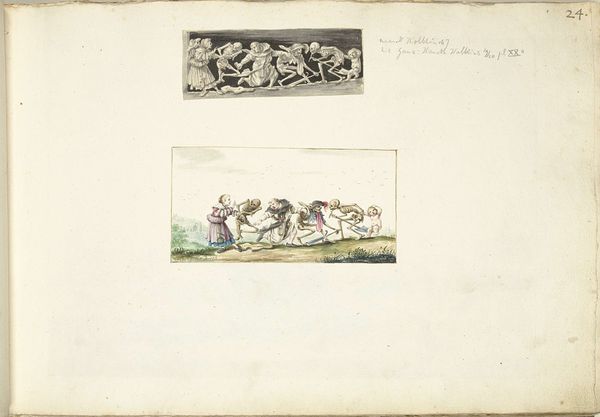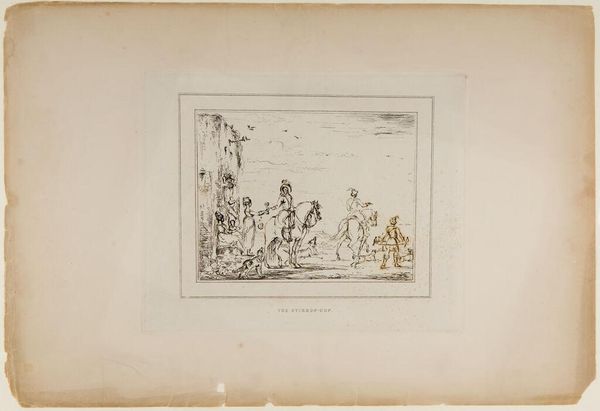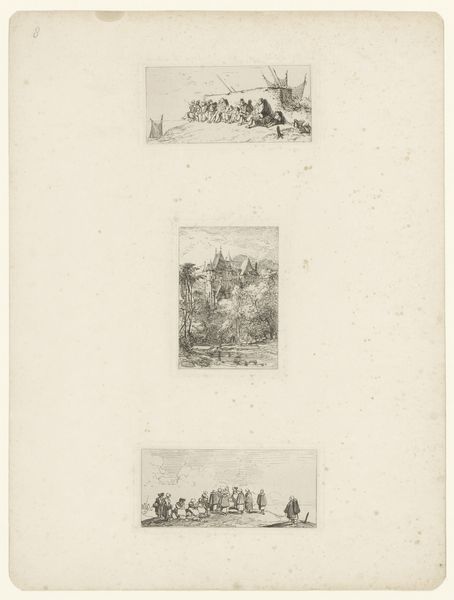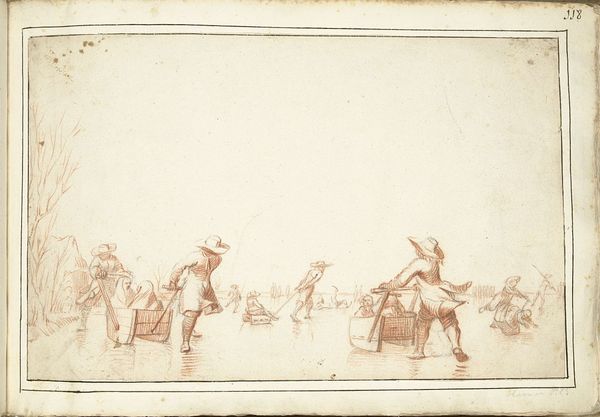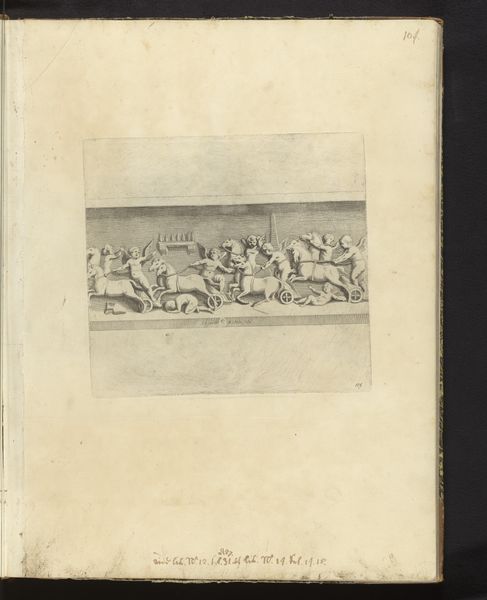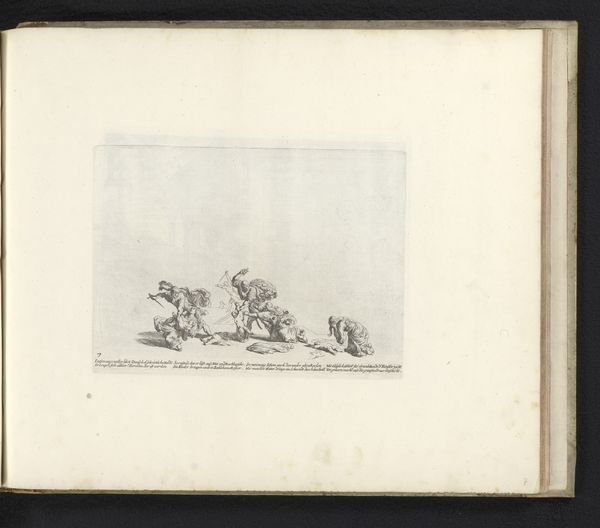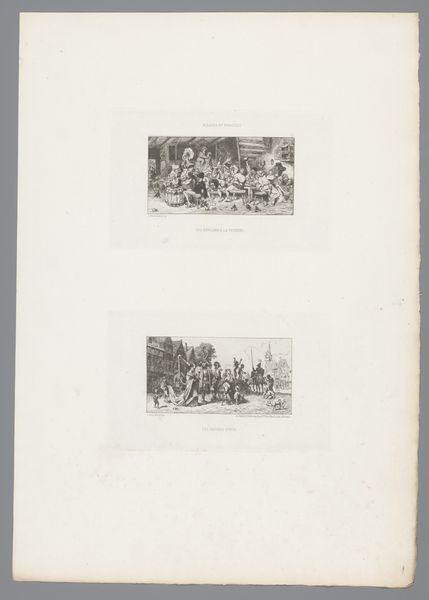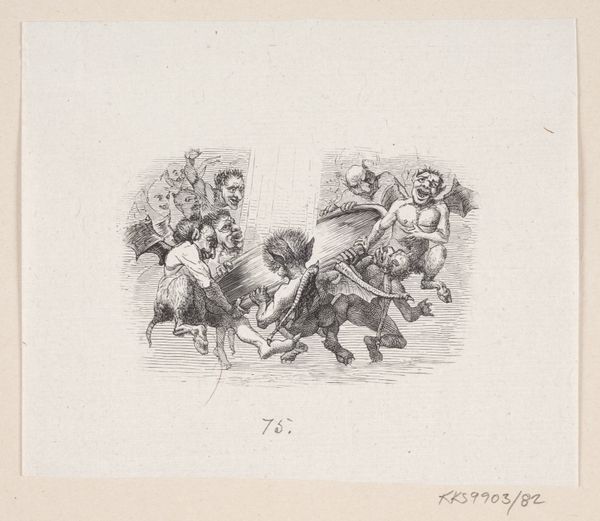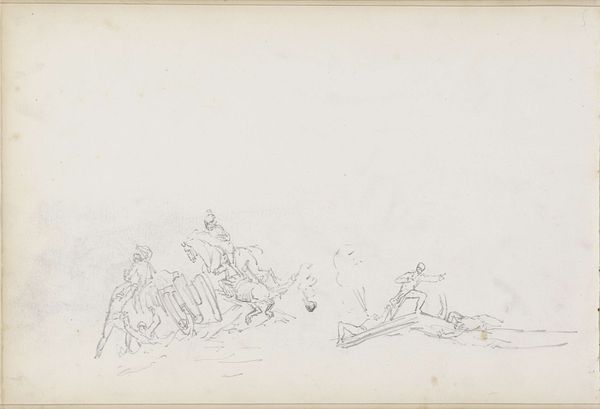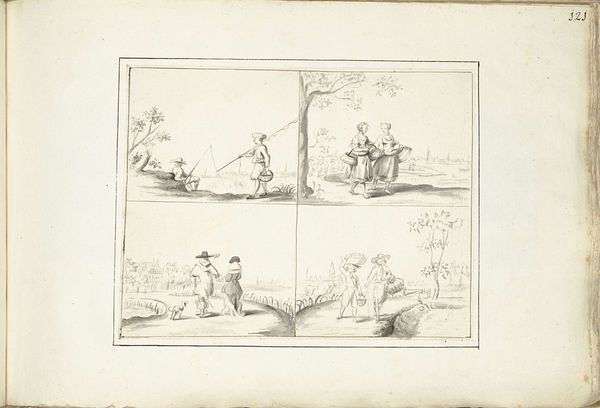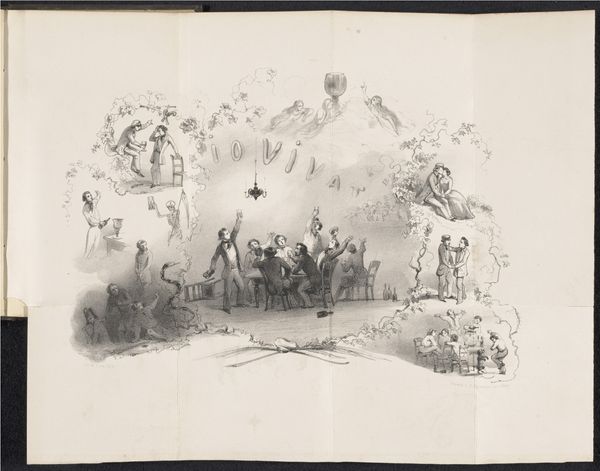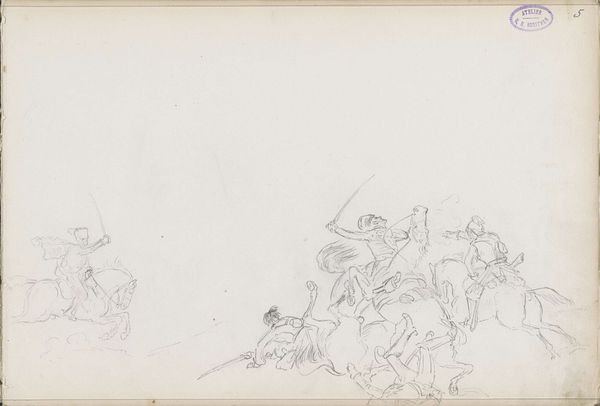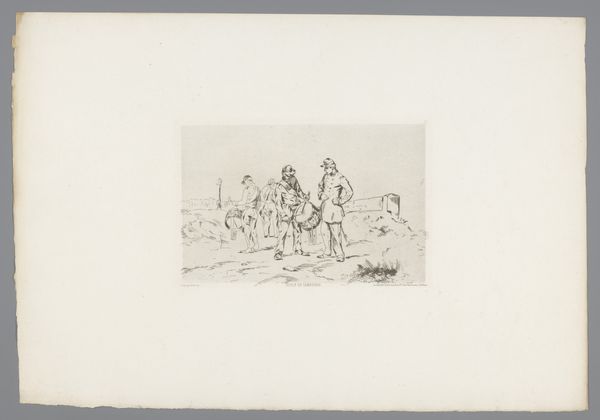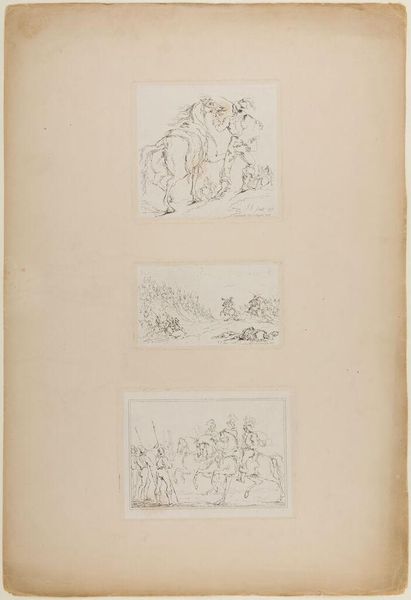
Dimensions: height 243 mm, width 360 mm
Copyright: Rijks Museum: Open Domain
Curator: Welcome. Today we're examining "Dance of Death", a drawing in ink and watercolor on paper by Gesina ter Borch. It’s currently held at the Rijksmuseum. Editor: Immediately, the contrast between the upper and lower panels grabs my attention. The top one, stark and grayscale, exudes a classical, almost stony feel. The lower scene feels more intimate because it's in color. Curator: Indeed. The upper section appears to be after Hans Holbein the Younger. Ter Borch likely copied it as part of her artistic training or in creating variations on the “Dance of Death” theme. “Dance of Death” was, of course, a popular medieval allegory on the universality of death. It spoke to social anxieties about disease, particularly plague, which was topical at the time and in line with artistic norms. Editor: Exactly. In these scenes, notice how death is not a great leveller—it actually emphasizes societal hierarchies? The figures seem plucked from different social strata, with the skeletons escorting people away. What does it mean when the lower scene has the skeleton at the head? Curator: The skeleton leading the procession in color definitely shifts the dynamic. It brings forth questions of leadership. In these scenes, the composition challenges who possesses agency. We could interpret the work through a modern lens. How power, in its various forms, faces its own mortality. Editor: Absolutely. And it speaks to issues relevant now, such as inequities in access to healthcare or who is more vulnerable in any large-scale crisis. It begs us to think about the way systems value certain lives over others and leads us to look for meaning today. The expressions on the faces of the living figures are fantastic too: terror, resignation, denial. All of humanity. Curator: Ter Borch’s piece uses an established historical allegory and injects subtle differences, reflecting artistic practices. It served didactic and decorative functions, yet this does more. Editor: Ultimately, reflecting on these images, particularly now, asks vital questions about our society's power structures. Are we active participants in this dance, or can we change the music?
Comments
No comments
Be the first to comment and join the conversation on the ultimate creative platform.
